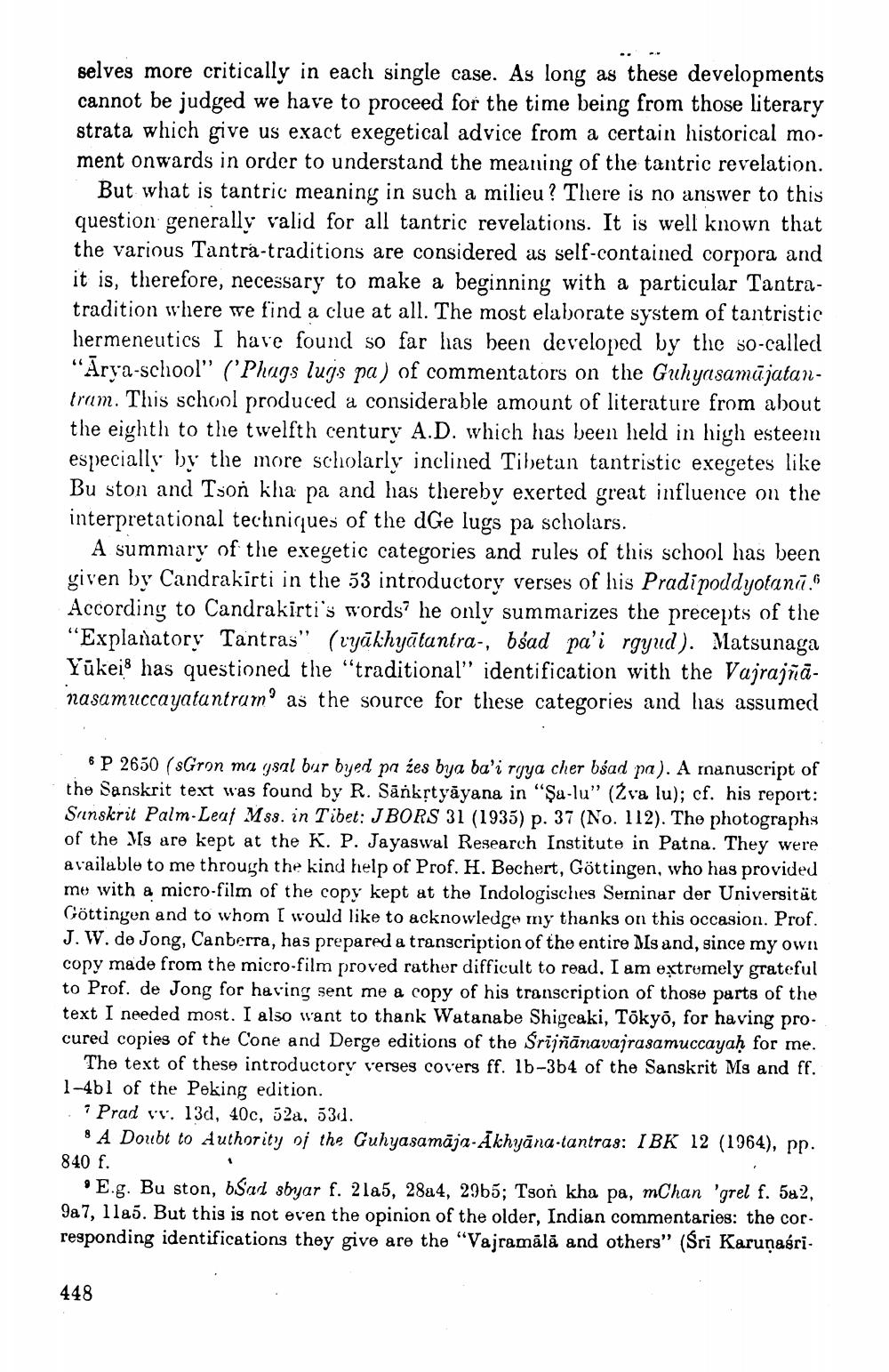Book Title: Remarks On Trantristic Hermeneutics Author(s): Ernst Steinkellner Publisher: Ernst Steinkellner View full book textPage 4
________________ selves more critically in each single case. As long as these developments cannot be judged we have to proceed for the time being from those literary strata which give us exact exegetical advice from a certain historical mo. ment onwards in order to understand the meaning of the tantric revelation. But what is tantric meaning in such a milieu ? There is no answer to this question generally valid for all tantric revelations. It is well known that the various Tantra-traditions are considered as self-contained corpora and it is, therefore, necessary to make a beginning with a particular Tantratradition where we find a clue at all. The most elaborate system of tantristic hermeneutics I have found so far has been developed by the so-called "Arya-school" ('Phags lugs pa) of commentators on the Guhyasamūjatantram. This school produced a considerable amount of literature from about the eighth to the twelfth century A.D. which has been held in high esteem especially by the more scholarly inclined Tibetan tantristic exegetes like Bu ston and Tson kha pa and has thereby exerted great influence on the interpretational techniques of the dGe lugs pa scholars. A summary of the exegetic categories and rules of this school has been yiven by Candrakirti in the 53 introductory verses of his Pradipoddyotanī. According to Candrakirti's words? he only summarizes the precepts of the "Explanatory Tantras" (ryākhyātuntra-, bśad pa'i rgyud). Matsunaga Yükei® has questioned the "traditional" identification with the Vajrajñānasamuccayatantrar' as the source for these categories and has assumed 6 P 2650 (sGron mo ysal bur byed pa żes bya ba'i rgya cher bśad pa). A manuscript of the Sanskrit text was found by R. Sānkrtyāyana in "Şa-lu" (Zva lu); cf. his report: Sanskrit Palm-Leaf M88. in Tibet: J BORS 31 (1935) p. 37 (No. 112). The photographs of the Ms are kept at the K. P. Jayaswal Research Institute in Patna. They were available to me through the kind help of Prof. H. Bechert, Göttingen, who has provided me with a micro-film of the copy kept at the Indologisches Seminar der Universität Göttingen and to whom I would like to acknowledge my thanks on this occasion. Prof. J. W. de Jong, Canberra, has prepared a transcription of the entire Mis and, since my own copy made from the micro-film proved rather difficult to read. I am extremely grateful to Prof. de Jong for having sent me a copy of his transcription of those parts of the text I needed most. I also want to thank Watanabe Shigeaki, Tokyo, for having pro. cured copies of the Cone and Derge editions of the Srijñānavajrasamuccayaḥ for me. The text of these introductory verses covers ff. lb-3b4 of the Sanskrit Ms and ff. 1-4b1 of the Peking edition. ? Prad vr. 130, 400, 52a, 53d. 8 A Doubt to Authority oj the Guhyasamāja-Akhyāna-tantras: IBK 12 (1964), pp. 840 f. E.g. Bu ston, Sad sbyar f. 21a5, 28a4, 2965; Tson kha pa, mChan 'grel f. 582, 9a7, 11a5. But this is not even the opinion of the older, Indian commentaries: the corresponding identifications they give are the “Vajramālā and others" (Sri Karuņasri 448Page Navigation
1 2 3 4 5 6 7 8 9 10 11 12 13 14
